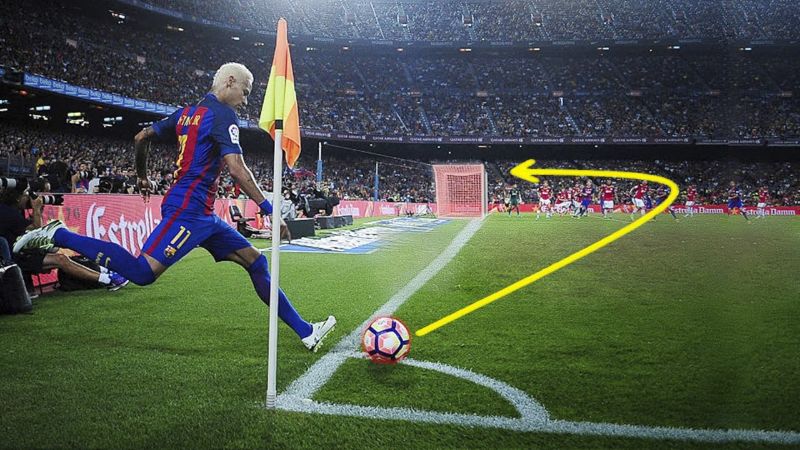Top 13 app tài xỉu online uy tín nhất Việt Nam 2025

Tài xỉu online đang trở thành một trong những trò chơi cá cược phổ biến nhất tại Việt Nam. Với sự phát triển của công nghệ, người chơi giờ đây có thể dễ dàng tham gia vào các ván tài xỉu hấp dẫn thông qua các ứng dụng di động. Tuy nhiên, để có được trải nghiệm chơi game tốt nhất và đảm bảo an toàn, việc lựa chọn được một app game tài xỉu online uy tín là vô cùng quan trọng. Bài viết này sẽ giới thiệu đến bạn top 10 app game tài xỉu online đáng tin cậy nhất tại Việt Nam hiện nay, cùng những thông tin hữu ích khác về trò chơi này.

Top 10 app tài xỉu online uy tín nhất hiện nay
Thị trường game tài xỉu online tại Việt Nam đang ngày càng phát triển mạnh mẽ với sự xuất hiện của nhiều nhà cái và ứng dụng chơi game. Tuy nhiên, không phải tất cả các app đều đáng tin cậy và mang lại trải nghiệm tốt cho người chơi. Dưới đây là 10 app game tài xỉu online được đánh giá cao nhất về độ uy tín, chất lượng và dịch vụ tại Việt Nam.
1. Tài xỉu online Net88
Net88 là một trong những cái tên hàng đầu khi nhắc đến app game tài xỉu online uy tín tại Việt Nam. Với giao diện đẹp mắt và dễ sử dụng, Net88 mang đến cho người chơi trải nghiệm chơi game tuyệt vời trên cả nền tảng web và ứng dụng di động.
Ứng dụng tài xỉu của Net88 nổi bật với tính năng bảo mật cao, đảm bảo thông tin cá nhân và giao dịch tài chính của người chơi luôn được bảo vệ an toàn. Hệ thống thanh toán đa dạng và nhanh chóng cũng là một điểm cộng lớn, giúp người chơi dễ dàng nạp tiền và rút thưởng.
Net88 còn cung cấp nhiều chương trình khuyến mãi hấp dẫn dành riêng cho game tài xỉu, như thưởng nạp lần đầu, hoàn trả, và các giải thưởng đặc biệt cho người chơi thường xuyên. Đội ngũ hỗ trợ khách hàng chuyên nghiệp, hoạt động 24/7 luôn sẵn sàng giải đáp mọi thắc mắc của người chơi.
2. App tài xỉu online Soc88
Soc88 là một cái tên không còn xa lạ trong cộng đồng cá cược trực tuyến Việt Nam. App tài xỉu online của Soc88 được đánh giá cao nhờ tính ổn định và độ tin cậy cao.
Giao diện của app Soc88 được thiết kế đơn giản nhưng không kém phần hiện đại, giúp người chơi dễ dàng điều hướng và tìm kiếm các trò chơi yêu thích. Hệ thống bảo mật tiên tiến đảm bảo mọi thông tin và giao dịch của người chơi đều được bảo vệ tối đa.
Soc88 cung cấp đa dạng các phòng chơi tài xỉu với mức cược phù hợp cho mọi đối tượng người chơi, từ những người mới bắt đầu đến những cao thủ. Chính sách thưởng và khuyến mãi của Soc88 cũng rất hấp dẫn, với nhiều ưu đãi dành riêng cho game tài xỉu.
3. Game tài xỉu online uy tín UK88
UK88 là một trong những nhà cái có lịch sử lâu đời và uy tín hàng đầu tại thị trường Việt Nam. App game tài xỉu online của UK88 nổi tiếng với tính công bằng và minh bạch trong mọi ván chơi.
Ứng dụng của UK88 được tối ưu hóa để hoạt động mượt mà trên nhiều thiết bị di động khác nhau, từ smartphone đến máy tính bảng. Người chơi có thể dễ dàng tham gia các ván tài xỉu với tốc độ nhanh và ổn định.
UK88 cung cấp nhiều tính năng độc đáo cho game tài xỉu, như thống kê chi tiết lịch sử chơi, phân tích xu hướng, và các công cụ hỗ trợ người chơi đưa ra quyết định. Chính sách hỗ trợ khách hàng của UK88 cũng rất chuyên nghiệp, với đội ngũ tư vấn viên nhiệt tình và am hiểu.
4. Game tài xỉu online XO88
XO88 là một cái tên mới nổi nhưng đã nhanh chóng chiếm được lòng tin của nhiều người chơi tài xỉu online tại Việt Nam. App game của XO88 được đánh giá cao về tính năng và trải nghiệm người dùng.
Giao diện của XO88 được thiết kế hiện đại và bắt mắt, tạo cảm giác thú vị ngay từ lần đầu sử dụng. Hệ thống phòng chơi đa dạng với nhiều mức cược khác nhau, phù hợp với mọi túi tiền của người chơi.
XO88 cung cấp nhiều tính năng độc đáo như chơi thử miễn phí, giúp người chơi mới làm quen với luật chơi và giao diện trước khi tham gia đặt cược thật. Chính sách khuyến mãi của XO88 cũng rất hấp dẫn, với nhiều ưu đãi dành riêng cho người chơi tài xỉu.
5. App tài xỉu online uy tín TA88
TA88 là một trong những app game tài xỉu online được đánh giá cao về tính uy tín và chất lượng dịch vụ. Với nhiều năm kinh nghiệm trong lĩnh vực cá cược trực tuyến, TA88 đã xây dựng được một cộng đồng người chơi trung thành.
App tài xỉu của TA88 nổi bật với tính năng bảo mật cao cấp, sử dụng công nghệ mã hóa tiên tiến để bảo vệ thông tin và giao dịch của người chơi. Giao diện trực quan và dễ sử dụng giúp cả những người mới chơi cũng có thể nhanh chóng làm quen.
TA88 cung cấp đa dạng các phòng chơi tài xỉu với nhiều mức cược khác nhau, từ những bàn chơi nhỏ cho đến những ván cược lớn dành cho các cao thủ. Chính sách thưởng và khuyến mãi của TA88 cũng rất hào phóng, với nhiều ưu đãi hấp dẫn dành cho người chơi tài xỉu.
6. Tải game tài xỉu online Five88
Five88 là một trong những nhà cái uy tín và lâu đời nhất tại thị trường Việt Nam, và app game tài xỉu online của họ cũng không phải ngoại lệ. Five88 nổi tiếng với sự chuyên nghiệp và chất lượng dịch vụ hàng đầu.
Giao diện của app Five88 được thiết kế với phong cách hiện đại, tối giản nhưng không kém phần sang trọng. Các chức năng được bố trí hợp lý, giúp người chơi dễ dàng điều hướng và tìm kiếm trò chơi yêu thích.
Five88 cũng cung cấp tính năng tùy chỉnh giao diện theo sở thích cá nhân, giúp người chơi có thể tạo ra môi trường chơi game thoải mái nhất cho mình.
7. App tài xỉu rút được tiền Nbet
Nbet là một cái tên đáng chú ý trong danh sách top 10 app game tài xỉu online uy tín nhất Việt Nam. Nbet nổi tiếng với khả năng thanh toán nhanh chóng và đáng tin cậy, đặc biệt là trong việc rút tiền thắng cược.
Nbet sử dụng các phương thức bảo mật tiên tiến để đảm bảo an toàn cho mọi giao dịch tài chính. Người chơi có thể yên tâm rằng thông tin cá nhân và số dư tài khoản của họ luôn được bảo vệ tối đa.
Nbet có chính sách thưởng hấp dẫn dành riêng cho người chơi tài xỉu. Từ thưởng chào mừng cho người chơi mới, đến các chương trình khuyến mãi thường xuyên như hoàn trả, thưởng nạp lại, và các giải thưởng đặc biệt cho người chơi Vthường xuyên. Điều này không chỉ giúp tăng cường trải nghiệm chơi game mà còn tạo động lực cho người chơi quay lại tham gia.
8. App tài xỉu online uy tín OXbet
OXbet là một cái tên nổi bật trong thị trường game tài xỉu online tại Việt Nam. Với nhiều tính năng hấp dẫn và độ tin cậy cao trong giao dịch, OXbet đã thu hút được một lượng lớn người chơi.
App OXbet sở hữu giao diện cực kỳ thân thiện và dễ sử dụng. Với thiết kế trực quan, người chơi không cần mất quá nhiều thời gian để làm quen với các chức năng trên ứng dụng. Mọi thứ từ đăng nhập đến đặt cược đều diễn ra nhanh chóng và thuận tiện, mang lại cảm giác thoải mái cho người chơi.
Chương trình VIP của OXbet cũng rất đáng chú ý, với nhiều ưu đãi độc quyền dành riêng cho thành viên. Đặc biệt, mức hoàn trả cược thua cũng nằm trong hàng tối ưu trên thị trường, giúp người chơi cảm thấy an tâm hơn khi tham gia cá cược.
9. Tải game tài xỉu online Lucky88
Lucky88 là một lựa chọn phổ biến khác cho những ai yêu thích game tài xỉu online tại Việt Nam. Với đa dạng các loại hình trò chơi và tính năng độc đáo, Lucky88 đã không ngừng cải tiến để giữ chân người chơi.
Lucky88 rất chú trọng đến dịch vụ khách hàng, với một đội ngũ hỗ trợ nhiệt tình và chuyên nghiệp. Người chơi có thể dễ dàng liên hệ với bộ phận hỗ trợ thông qua nhiều phương thức khác nhau, đảm bảo vấn đề của họ được giải quyết kịp thời.
Lucky88 luôn có những chính sách ưu đãi hấp dẫn dành cho người chơi, từ các khoản thưởng chào mừng lớn cho đến các chương trình khuyến mãi thường niên. Chương trình VIP cũng rất tốt, đem lại những lợi ích lớn cho những người chơi trung thành.
10. Game tài xỉu online uy tín 11bet
Cuối cùng, nhưng chắc chắn không kém phần quan trọng, là 11bet – một cái tên đang dần ghi dấu ấn trên thị trường game tài xỉu online tại Việt Nam. Với nhiều tính năng tiện ích và cam kết đảm bảo quyền lợi cho người chơi, 11bet đã thu hút được đông đảo người tham gia.
App 11bet không chỉ mang đến những trải nghiệm cá cược truyền thống mà còn tích hợp nhiều tính năng hữu ích như live betting, cho phép người chơi tham gia đặt cược ngay trong khi trận đấu đang diễn ra. Điều này tạo cảm giác hứng khởi và mong chờ cho người chơi trong mọi ván cược.
Khi tham gia 11bet, người chơi sẽ được tận hưởng các dịch vụ hỗ trợ khách hàng tuyệt vời. Đội ngũ hỗ trợ luôn ở đây để nghe và hỗ trợ bạn, bất kể vấn đề là gì. Họ có thể giải đáp thắc mắc về tài khoản, cược, hoặc thậm chí là xét duyệt liên quan đến các chương trình khuyến mãi.
Tài Xỉu Online – Giới Thiệu Và Cách Chơi Cơ Bản
Tài Xỉu Online, còn được biết đến với tên gọi Sicbo, là một trò chơi đánh bạc trực tuyến dựa trên nguyên lý dự đoán kết quả của ba viên xúc xắc. Trò chơi này đã nhanh chóng trở nên phổ biến trong cộng đồng game thủ online nhờ luật chơi đơn giản và cơ hội thắng hấp dẫn. Để bắt đầu hành trình khám phá thế giới Tài Xỉu Online, chúng ta hãy tìm hiểu về cách chơi cơ bản và những khái niệm quan trọng.
Luật chơi cơ bản của Tài Xỉu Online
Luật chơi Tài Xỉu Online khá đơn giản. Người chơi sẽ đặt cược vào một trong hai cửa: Tài (tổng số điểm từ 11 đến 18) hoặc Xỉu (tổng số điểm từ 4 đến 10). Sau khi đặt cược, hệ thống sẽ tiến hành lắc ba viên xúc xắc và tính tổng điểm. Nếu kết quả trùng với cửa mà người chơi đã đặt, họ sẽ nhận được tiền thưởng.
Điều đặc biệt của Tài Xỉu Online là người chơi không chỉ giới hạn ở việc đặt cược Tài hoặc Xỉu. Họ còn có thể đặt cược vào nhiều lựa chọn khác như cược tổng số điểm cụ thể, cược chẵn/lẻ, cược bộ đôi, hay thậm chí là cược ba con giống nhau. Mỗi loại cược sẽ có tỷ lệ trả thưởng khác nhau, tạo nên sự đa dạng và hấp dẫn cho trò chơi.
Các Hình Thức Chơi Tài Xỉu Online Phổ Biến
Trong thế giới Tài Xỉu Online, người chơi không chỉ giới hạn ở một hình thức chơi duy nhất. Thay vào đó, họ có thể trải nghiệm nhiều biến thể khác nhau, mỗi loại mang đến những cảm giác và cơ hội thắng độc đáo. Hãy cùng khám phá các hình thức chơi Tài Xỉu Online phổ biến nhất hiện nay.
Tài Xỉu truyền thống
Đây là hình thức cơ bản và phổ biến nhất của Tài Xỉu Online. Trong hình thức này, người chơi chỉ cần đặt cược vào một trong hai cửa: Tài (tổng điểm từ 11 đến 18) hoặc Xỉu (tổng điểm từ 4 đến 10). Sau khi ba viên xúc xắc được lắc, tổng điểm sẽ được tính và người chơi sẽ thắng nếu dự đoán đúng.
Tài Xỉu 3D
Tài Xỉu 3D là một bước tiến trong việc nâng cao trải nghiệm người chơi. Hình thức này sử dụng công nghệ đồ họa 3D để tạo ra một môi trường chơi game sống động và chân thực hơn. Thay vì nhìn thấy các con số trên màn hình, người chơi sẽ được chứng kiến quá trình lắc xúc xắc và kết quả hiển thị một cách trực quan.
Tài Xỉu online với Dealer trực tiếp
Đây là hình thức chơi Tài Xỉu Online được nhiều người yêu thích nhất hiện nay. Thay vì chơi với một hệ thống máy tính, người chơi sẽ được tương tác trực tiếp với một Dealer (người chia bài) thông qua hình ảnh và âm thanh trực tuyến.
Tài Xỉu với các loại cược phụ
Bên cạnh việc đặt cược vào Tài hoặc Xỉu, nhiều nhà cái còn cung cấp các loại cược phụ để tăng thêm sự hấp dẫn cho trò chơi. Một số loại cược phụ phổ biến bao gồm:
Cược tổng điểm cụ thể: Người chơi có thể đặt cược vào một tổng điểm cụ thể (từ 4 đến 17).
Cược chẵn/lẻ: Đặt cược vào tổng điểm là số chẵn hoặc lẻ.
Cược bộ đôi: Đặt cược vào việc sẽ có hai viên xúc xắc có số điểm giống nhau.
Cược ba con giống: Đặt cược vào việc cả ba viên xúc xắc sẽ có số điểm giống nhau.
Các loại cược phụ này thường có tỷ lệ trả thưởng cao hơn so với cược Tài/Xỉu thông thường, tạo cơ hội cho người chơi có thể thắng lớn. Tuy nhiên, chúng cũng đi kèm với rủi ro cao hơn do xác suất thắng thấp hơn.
Hướng Dẫn Cách Chọn Nhà Cái Tài Xỉu Uy Tín Và An Toàn
Khi tham gia Tài Xỉu Online, việc chọn nhà cái uy tín là yếu tố cực kỳ quan trọng để bảo đảm an toàn cho tiền bạc và thông tin cá nhân của bạn. Với thị trường online ngập tràn sự lựa chọn, người chơi cần biết cách để chọn lọc và tìm kiếm một nhà cái đáng tin cậy.
Đánh giá độ uy tín của nhà cái
Để đánh giá một nhà cái, điều đầu tiên người chơi cần xem xét là giấy phép hoạt động. Luôn lựa chọn những nhà cái có giấy phép vận hành rõ ràng từ các tổ chức có uy tín. Điều này không chỉ mang lại cảm giác an tâm mà còn đảm bảo rằng nhà cái tuân thủ những quy định nghiêm ngặt trong lĩnh vực này.
Thông tin về phương thức thanh toán
Khi lựa chọn nhà cái Tài Xỉu Online, người chơi cũng cần chú ý đến các phương thức thanh toán mà nhà cái hỗ trợ. Một nhà cái uy tín sẽ cung cấp đa dạng các hình thức gửi và rút tiền, đảm bảo tính bảo mật và nhanh chóng trong giao dịch. Trước khi bắt đầu chơi, hãy chắc chắn rằng bạn đã kiểm tra kỹ về các điều khoản liên quan đến tài chính, bao gồm phí giao dịch và thời gian rút tiền.
Các chương trình khuyến mãi và ưu đãi
Nhiều người chơi có xu hướng chọn nhà cái dựa trên các chương trình khuyến mãi hấp dẫn. Tuy nhiên, đừng chỉ nhìn vào giá trị món quà hay tặng thêm. Điều quan trọng là phải đọc kỹ các điều khoản và điều kiện đi kèm. Một số chương trình ưu đãi có thể đi kèm với những yêu cầu khó khăn về cược, làm giảm tính khả thi của việc rút tiền thắng.
Kết luận
Việc lựa chọn một app game tài xỉu online uy tín không chỉ đơn thuần là vấn đề về giải trí mà còn liên quan đến nhiều yếu tố như bảo mật, chất lượng dịch vụ và khả năng thanh toán. Các nhà cái như Net88, Soc88, UK88, XO88, TA88, Five88, Nbet, OXbet, Lucky88, và 11bet đã chứng minh được vị thế của mình thông qua sự tin cậy và chuyên nghiệp trong ngành công nghiệp cá cược online.








































